How to Make a Terrarium in 5 Simple Steps

By Hannah Twietmeyer
It’s no secret that potted houseplants are a homemaker’s secret weapon. Let the vines of a pothos plant drape over a shelf, propagate beautiful eucalyptus and hang it in the bathroom, or reserve a corner in your living room for an ever-expanding fiddle leaf fig. Whether the greenery is used to take up space, create a decorative accent, or cleanse the air, you can be sure it will brighten up any room.
Potted plants get the job done, but terrariums are a true conversation starter. The homemade, indoor garden pieces suit any coffee table, desk, or shelf, and you can customize them to display all of your favorite plants. Not to mention, creating your own is fun and easy.
Creating a terrarium comes down to a little bit of science since not all plants are fit for the ecosystem in which terrariums create (we’ll cover this more in the next section). Here’s a complete guide on how to make a terrarium yourself.
Photo via Vidura Randeepa
What Is a Terrarium?
Essentially, a terrarium is a miniature, portable greenhouse that you can display right inside your own home. They’re often made of plastic or glass containers like wide jars or fish bowls and can be displayed with or without a lid. You’re able to grow all sorts of plants in a terrarium, and while the mini garden makes for unique home decor, it also moderates its own climate.
Although the plants you choose to grow will be in an enclosed container, sunlight can still seep through the glass or plastic. By using clear glass or plastic containers, the sun’s rays warm the plants and the space inside the terrarium, and moisture and heat are trapped inside — just like a greenhouse!
Terrarium Containers
The type of container you choose for your terrarium will help you narrow down the large list of plants you might be thinking about growing inside of it. Aside from the medium being glass or plastic, you generally have two options when it comes to terrarium containers: closed and open.
Closed Terrariums
If the plants you have your eye on thrive in humid environments and prefer moisture, you want to plant them in a closed container. These containers have a small opening that can be covered tightly with a lid, keeping moisture and heat from escaping. Terrarium ecosystems in a closed container usually require little maintenance, since they moderate their own climates year-round. Some go-to options for closed terrarium containers include lidded jars and bowls or bottles with a cork or top.
Open Terrariums
For plants that won’t tolerate the humid climate of a closed terrarium, opt for an open one. This can just mean keeping the lid off of your container 24/7, or making your plants at home in a fishbowl, vase, or large glass bowl. Open terrariums will be drier since airflow is permitted, so they will need to be watered more frequently than closed containers. Since terrariums are popular home decor projects, you can even buy decorative open containers made specifically for planting.
Photo via OnTheFly...DIY
Plants That Grow Well in Terrariums
A wide variety of plants are suitable for growing in a terrarium, but there are certain things you want to consider before heading to your local nursery.
First, try to come up with some sort of climate theme for your terrarium. Pick a container and decide between a humid or dry environment; this will help you narrow down plant selection. A plant’s moisture tolerance is an essential consideration; if it thrives in dry environments, it might not be cut out for terrarium life or may need an open container for airflow.
The Old Farmer’s Almanac has a long list of popular terrarium plants. Here are a few of our favorites, broken down by terrarium container type:
Open Terrarium Plants
- Air plants. These plants are low maintenance to the point that they don’t even need soil to grow. They also love semi-humid environments, so an open terrarium will make a great home for your air plant of choice.
- Succulents. Varieties of cacti might be the first plant that comes to mind when preparing your terrarium, but many actually prefer a dry environment, so definitely opt for an open container. The same goes for other succulents like aloe and mini jade plants—they’ll need ventilation and could rot in an enclosed container that gets too humid.
- Venus flytraps. Putting together a terrarium gives you the opportunity to grow some carnivorous plants. Venus flytraps are iconic for their spiked jaws that clasp around their insect prey. To avoid fungus, keep them in an open terrarium with moderate humidity.
Closed Terrarium Plants
- Mosses. Absorbent and low maintenance, you can choose a variety of mosses to carpet areas of your closed terrarium. They thrive in moist environments with high humidity and low light and establish well in a controlled environment (via Bantam Earth).
- Ferns. These leafy, vascular plants love moisture, making them high-demand terrarium prospects. Fun fact—the U.S. Forest Service tells us there are over 380 species of ferns in North America. Just make sure to choose a type that doesn’t get too big and will outgrow its container.
- Nerve plants. Named aptly for their bright pink, white, or yellow veined leaves, nerve plants are tropical and thrive in humid environments (per Costa Farms). They’re a great way to add a pop of sophisticated color to your otherwise green and brown terrarium.
- Polka-dot plants. The small green leaves of a polka-dot plant give way to yet another colorful variety. This plant is similar in size and shape to a nerve plant, but you’ll notice a spatter of pink, purple, red, or white dots covering the leaves.
The list goes on. Many houseplants are tropical, so they should do well in a terrarium; just do some quick research ahead of time to check on how they handle moderate moisture and humidity.
Plant height is the other thing you should keep in mind when picking out your plants—stay small! You can always prune your terrarium plants, but ones that mature and stay small in size will require less maintenance.
Photo via Zest it Up
How to Make a Terrarium
With all of your plants selected and a container on hand, you’re ready to assemble your very own terrarium. Make sure you do so in an area that won’t be damaged by any possible soil spillage, especially if you’re crafting with kids. Start your project on a newspaper-covered table or out on the deck, and let your creativity surge.
Tools and Materials Needed:
- Open or closed container
- Plants of choice
- Gardening gloves
- Gravel and small pebbles
- Crushed charcoal (optional)
- Sterile potting soil
- Dowel rod or spoon
- Small gardening spade
- Any decorations or accessories
- Spray bottle or plant mister
Step 1: Create a Base of Stones
Start off your terrarium by layering gravel or small pebbles on the bottom of your container. This will help prevent root rot by preventing your soil from turning into soup and will give any excess water some space to settle. Your first layer should be about an inch or two thick.
Step 2: Add Layers of Charcoal and Soil
Adding charcoal to your terrarium is completely optional, but it’s worth the consideration. A thin ½-inch dusting of crushed charcoal on top of the pebbles will help remove any funky odors and toxins in the terrarium, a natural capability of the product, according to WebMD.
Keep your gardening gloves on and use a small garden spade to keep things clean when working with the charcoal and, next, dirt. After the charcoal (or after the gravel, if you don’t have charcoal on hand) you’ll want to add about two to four inches of potting soil. This layer should be as thick or as thin as your plants need it, and it should be just normal houseplant potting soil—one that isn’t mixed with fertilizer.
Add a Moss Layer
Step 3: Place Plants Inside Terrarium Container
This step is as simple as placing the plants in the soil layer and covering the roots, but if you have a terrarium with a small opening, things can be a little trickier.
Start off by inspecting your plant. Cut off any yellowing leaves and brush compacted soil from the roots. For tight squeezes, we suggest using some sort of tool (like a dowel rod or spoon) to make indentations in the soil where you’d like to place your plant. Then, gently slip your plant through the container opening and into the pocket in the soil. Cover the roots with more soil and tamp down.
Step 4: Decorate As You Please
One of the best things about terrariums is that they're completely customizable. You can add hills, decorative trees, figurines, and more. Use your imagination!
Step 5: Mist and Cover
Once you’ve assembled everything, you’ll want to mist your plants to remove any lingering dirt and give them a drink. If your terrarium is the closed-container kind, give the plants about 24 hours to adjust to their new environment before securing the lid.
How to Care for a Terrarium
Your terrarium looks great! We know you want to keep it that way, so here are the main things to keep in mind to provide your terrarium with the best care possible:
- Don’t overwater. Generally, closed terrariums won’t need water for about four to six months, and if you give your terrarium plants too much water, cross your fingers and hope for the best, because it’s almost impossible to remove (via University of Missouri). It’s better to have your soil be a little dry than soaked. But still, keep an eye on the soil's moisture content and look at any visual signs of dehydration in your plants, like slouching and wilting.
- Know your plants’ light needs. Most terrarium plants will be damaged by harsh, direct sunlight; heat will often build up in the container, opened or closed, and scorch the greenery. Keep the container in a location with indirect—but sufficient—sunlight. You can use an artificial light if the location is low-light.
- Occasionally turn your terrarium. If the container is situated on a window, the plants will lean in the direction of the light source over time. Gently rotate your terrarium every few weeks to keep things growing straight.
- Avoid fertilizer. Most terrarium plants will not need fertilizer, since they usually are not meant to be fast-growing. If you notice after about eight to 12 months that your plants could use some oomph, use a minuscule amount of water-soluble houseplant fertilizer, about a quarter of the recommended use (via University of Missouri).
- Remove dying plants. It’s common for some plants to thrive in your terrarium and for others to not. If you notice a plant has gone under, remove it—you don’t want to risk spreading disease to the healthy plants in your container.
Have you curated a terrarium of your own? We’d love to see it, so drop a photo in the comments with any tips and tricks you recommend!



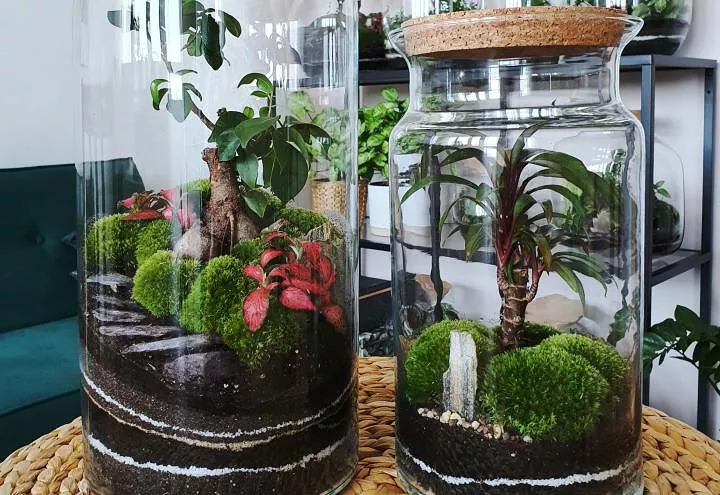


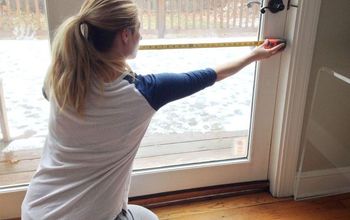

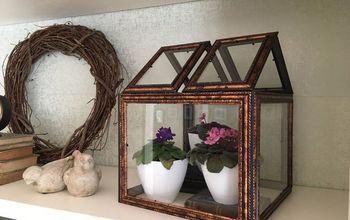
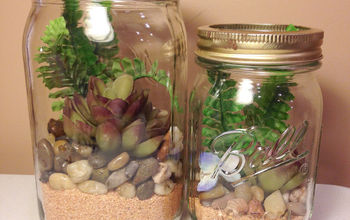
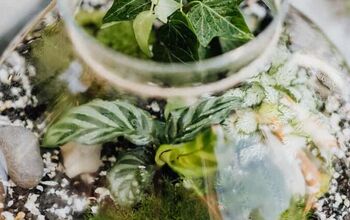
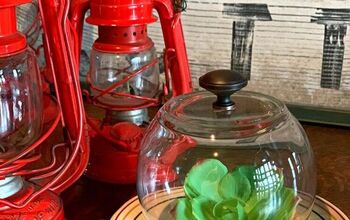
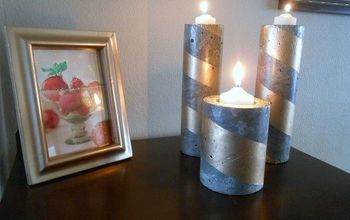
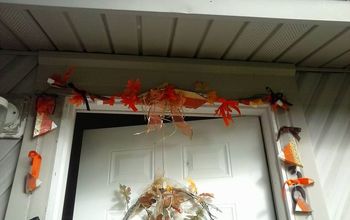
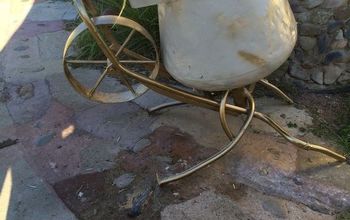



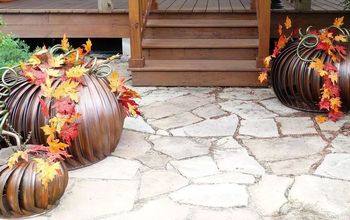

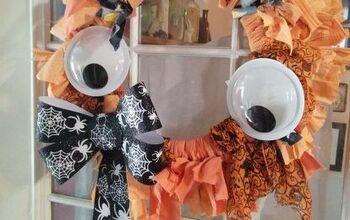

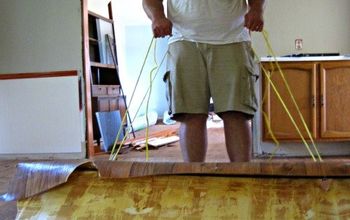



Frequently asked questions
Have a question about this project?